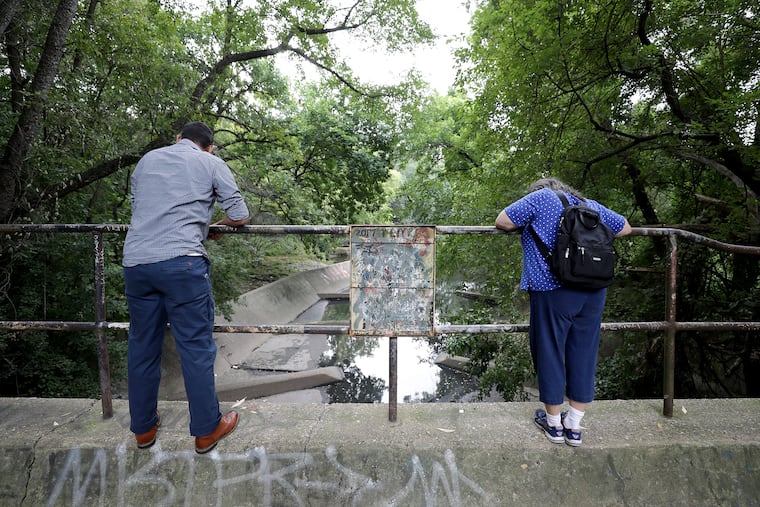Pa. underwrites a $100 million ‘big-ticket’ Philadelphia sewer plant upgrade
The upgrade will increase capacity at the Northeast Water Pollution Control Plant and reduce discharges of untreated sewage and stormwater into streams during big storms.

Philadelphia has obtained $100 million to build a “big ticket” pollution facility to help curtail the practice of dumping raw sewage and stormwater into streams during heavy rains.
The state awarded the Philadelphia Water Department a $100 million low-interest loan to build a preliminary treatment facility to increase capacity at the Northeast Water Pollution Control Plant. The water department on Monday called the treatment plant at Richmond and Wheatsheaf Streets in Port Richmond “a big-ticket, sustainable infrastructure project” unlike any the city has attempted since a wave of federally funded wastewater treatment projects in the 1980s.
The new plant will screen and remove inorganic materials — trash, sand and grit that wash down storm inlets — and allow the Northeast plant to increase its wet-weather treatment capacity by nearly by one half, rising from 435 million gallons to 650 million gallons per day.
The money for the project comes from the Pennsylvania Infrastructure Investment Authority’s PENNVEST program, which funds sewer, stormwater and drinking water projects across the state. The Philadelphia loan accounted for more than half of the $178 million in statewide PENNVEST infrastructure awards that Gov. Tom Wolf announced last week.
Philadelphia, like many older cities, is required to reduce untreated discharges from its older combined sewer systems, which carry rainwater as well as raw sewage. During some storms, the volume of wastewater is too great for water pollution control plants to treat, and the excess is dumped into streams.
Under a consent order with the federal government, the city in 2011 adopted a 25-year Green City, Clean Waters initiative to reduce discharges to comply with Clean Water Act obligations. The plan calls for the elimination of about eight billion gallons of sewer overflow annually by 2036.
“Philadelphia’s multi-decade plan to reduce combined sewer overflows just got a huge boost,” Philadelphia Water Department Commissioner Randy E. Hayman said in a statement. “We are thrilled to move forward with this vital piece of our effort. This fiscally responsible investment gives us much more muscle and capacity, drastically reducing water pollution that impacts our rivers and streams.”
The project was designed by Whitman, Requardt & Associates, LLP, a Baltimore engineering firm. Its plans for the building include a green roof and two-stage odor-control system to meet Clean Air Act requirements.
The 18,000-square-foot building will house two six-foot magnetic flow meters, and six mechanically cleaned bar screens and associated screening conveyance, and collection systems. The designs call for six 26-foot diameter hydraulically induced vortex grit tanks, according to State Sen. John Sabatina Jr., a Philadelphia Democrat whose Northeast Philadelphia district includes the plant just south of the Betsy Ross Bridge.
“In addition to the many jobs this funding creates, there’s tremendous health benefits for our community,” Sabatina said in a statement.
The project is expected to take four years to complete and is scheduled to begin operations in late 2025.
The project is funded from Clean Water State Revolving Funds, a federal program that has provided $45 billion to states for infrastructure loan funds. As loans are repaid, the states recycle the funds into new loans. The state programs have provided $138 billion to communities through 2019, according to the U.S. Environmental Protection Agency. In Pennsylvania, the money is administered by PENNVEST.
In addition to the $100 million loan, PENNVEST last week provided a $6.7 million loan to the Philadelphia Water Department to help pay for green stormwater upgrades in the Lawncrest neighborhood, with construction dates to be announced.
The agency also awarded $10 million to the Stormwater Authority of the City of Chester to address localized flooding in the Veteran’s Park area of the city of Chester by installing about 1,600 feet of pipe, inlets, porous panels, and a stormwater control basin.